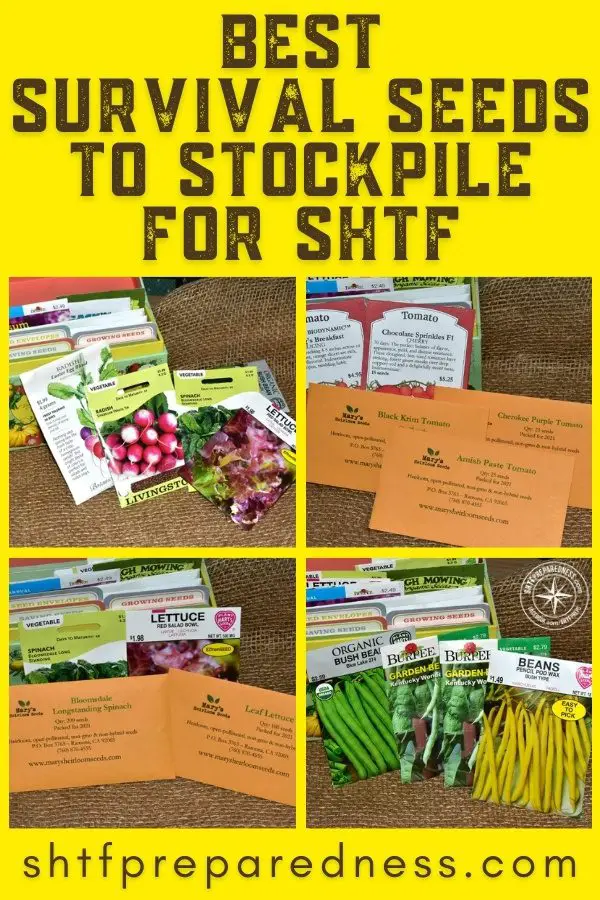SHTFPreparedness may collect a share of sales or other compensation from the links on this page.
Beans, bullets, and bandages are the prepper mantra. They also represent off-the-shelf solutions to SHTF scenarios.
How many of us actually make bullets, sterilize, and package bandages for the dark times?
This extends to beans and food. Do you know how to select the best survival seeds to stockpile for SHTF?
By going to the source of food (seeds), you gain the ability to break free from the big box store and produce your own food.
The trick is to know which seeds to buy and then how to grow them. Let’s look at that now!
Seed Types
Not all seeds are created equal. Yes, you put them all in the ground, and, with a bit of luck and a green thumb, they grow. That’s where the similarities end.
In a survival situation, you need to be more selective, as the wrong varieties of seeds will only provide you with short-term gains.
You need to prepare for the long term. There are shortcuts available here. You can get a survival seed vault or other seed kits.
But are they really the correct choice for you, your needs, your growing season, and your emergency survival situation? Make the correct choices for your personalized seed kit.
What Is the Difference Between Heirloom vs Non-Hybrid Seeds?
Speaking broadly, there are two types of seeds: hybrid and non-hybrid.
Hybrid seeds are the product of a cross between two parents, where the designer pursues a specific goal. This may be fruit size, disease resistance, or yield.
Regardless of the goal, the outcome is a seed that produces the desired trait. This is a forced process and rarely happens naturally.
A side effect of this process is that the line ends with the next generation. Any fruit from the seeds’ offspring will either be sterile or will produce unreliably.
In contrast to hybrid seeds, seed companies produce non-hybrid seeds via open pollination. The plants exchange genetic material naturally. These seeds and their offspring will produce the same fruit year after year.
Preppers always talk about heirloom seeds. Heirloom seeds are a subset of non-hybrid seeds. Heirlooms have proven themselves over the generations. As non-hybrids, their seeds will produce true fruit for generations to come.
Manufacturers label seed packages according to their seed type. As heirlooms are currently a rage in the gardening community, any heirloom variety is prominently advertised.
Which Type of Seed Should I Stockpile?
SHTF planning requires recognition of long-term needs. This includes the ability to grow food season after season without a trip to the big box store.
As you develop and stock your survival seed vault, focus on non-hybrid and heirloom seeds. Through the process of seed saving, you can keep seeds for next year’s season, and they will still produce.
Select the varieties that grow best in your area and stock up. Keep them dry and cool. An ammo can, or a sealed tote stored in the basement, is the perfect combination.
The shelf life of most seeds is about 5 years. But it may be longer.
Add new survival seeds every year and keep the older ones. You never know when a seed has a few extra years in it.
Best Survival Seeds for SHTF
Ok. What should I stockpile? Let’s look at a few categories of garden produce that will get you through the year.
We will focus on early producers, summer staples, and food that can be stored throughout the winter.
Spinach
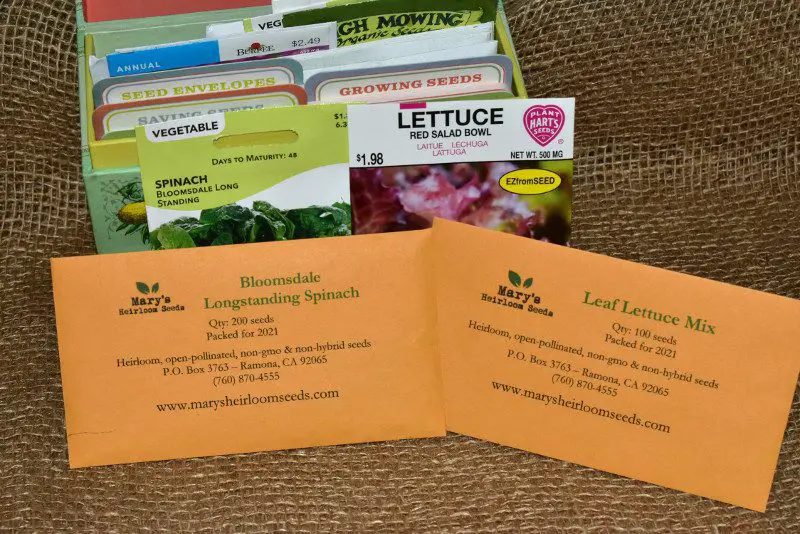
One of the earliest crops to plant and harvest is spinach. Plant it in the late winter or early spring before the ground has thawed.
It’s cold and hard, and you’ll have a fresh salad just as you are craving greens after a long winter.
Radishes
Our first root vegetable is radishes. Radishes are another early-harvest vegetable. Most radishes can be harvested within 30 days.
You can even do a second batch in the fall. Let a few go to seed for the next season.
Carrots
The first summer staple and root vegetable is carrots. Plant carrots early and harvest them throughout the summer.
If you live in a mild climate, you can overwinter carrots on the ground. Otherwise, keep them in a root cellar once the frost settles in.
Beets
Beets are a significant source of carbohydrates. They also bridge harvest seasons. Plant a few to harvest the greens in early summer.
Let the rest mature for the summer harvest and winter storage. Store them with other vegetables in your root cellar.
Beans (lots and lots of beans)
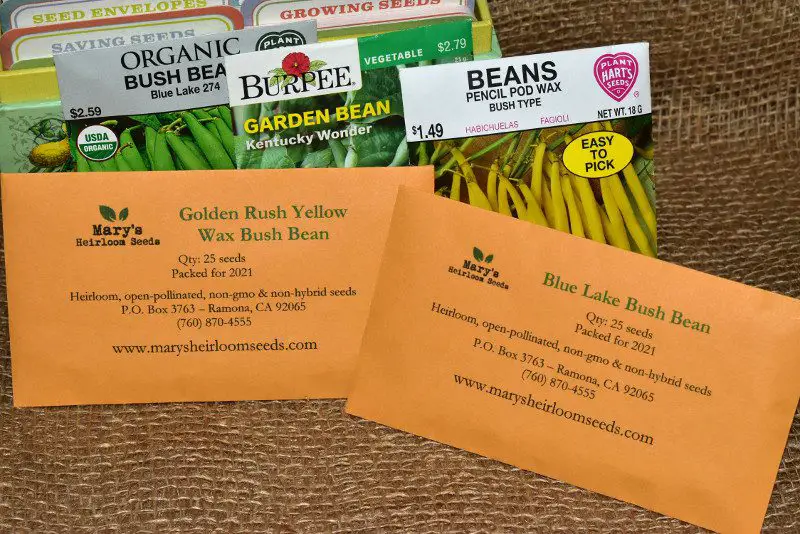
Next are beans. Beans are the cornerstone of prepper food storage. Plant them in quantity and variety.
Stock up on both bush and pole versions. Grow enough to can and dry. Cook and eat some of the dried beans. Save the rest for next year.
Turnips\Rutabaga
Turnips and rutabagas grow big and in numbers. It doesn’t take a lot of room to grow a few bushels. These hearty root vegetables will overwinter, giving you fresh food throughout the colder seasons.
Potatoes
Purchase a few hybrid potato seeds. Hybrids. Yes, I said hybrids. Potatoes are naturally unreliable from seed.
However, if you select the right hybrid, you can get reliable germination and production. After your first batch, switch over to planting last year’s sprouting potatoes.
Sweet Corn
Eat sweet corn right off the cob, can it for later, or let it dry, and it will store for decades.
Corn fertilizes via the wind, plant more than six rows to ensure complete fertilization. Corn is easy to add to your survival seed collection, and the seeds last forever.
Tomatoes
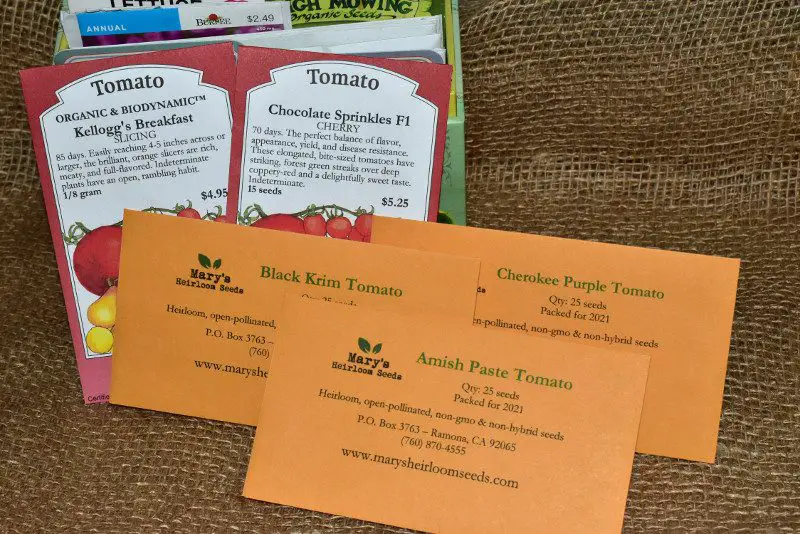
Is there anything better than a vine-ripened tomato? Tomatoes come in countless varieties. Some of the best are heirlooms!
Save the earliest and biggest fruit to harvest seeds from next year. Include several varieties in your survival seed stash.
Zucchini and Summer Squash
When you are on your own, you won’t mind an overabundance of zucchini. Eat these prolific vegetables raw, steamed, or baked. Don’t forget to dehydrate some for use during the winter.
Hearty Squash
Butternut, acorn, winter, and other hearty squash are perfect for winter storage. You will need a lot of room to let them wander. Including squash in your winter cooking is a great way to increase your meal calorie count.
Herbs
Nothing makes a meal better than herbs. I can turn plain rice into a gourmet meal with a few fresh herbs.
When SHTF limits your food palette, there is nothing better than a broad selection of herbs to make even boring food wonderful. Dedicate a section of your survival seeds to herbs!
Winter Wheat
Not exactly a food, winter wheat is essential to keeping your garden fit when you can’t run to the store for fertilizer.
Plant winter wheat after your harvest and grow it into the early winter. Used as a cover crop, winter wheat prevents erosion, chokes out weeds, and builds soil nutrients when you till it under in the spring.
Perennials to Start Now
Gardening does not need to be all about annual seeds. Annuals must be planted year after year. Each season, you must harvest enough seeds to plant for the next year. Break this cycle with a few perennials.
Plant Jerusalem artichokes, asparagus, rhubarb, and strawberries once, then harvest them forever. Perennials require a little planning, as you don’t want to move them, but the payoff is great.
Survival Gardening Tips
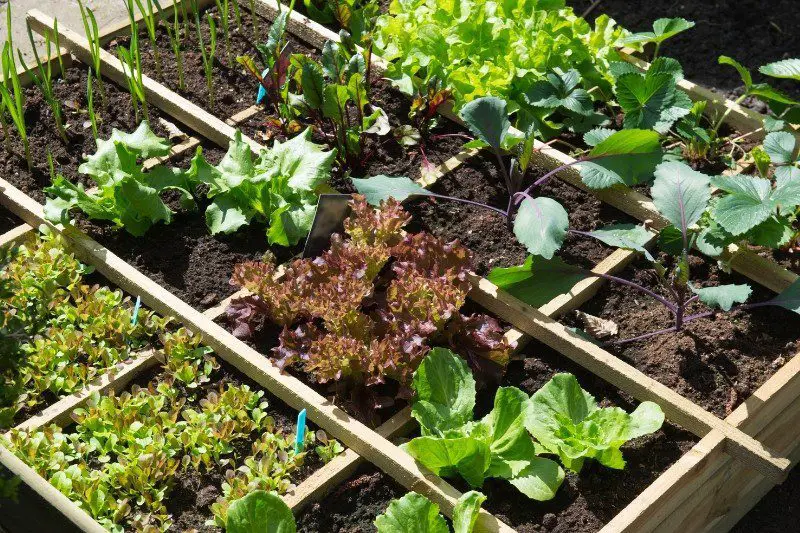
The care and maintenance of survival gardens is not an exact science. It’s amazing how many plants are not easy to grow. With a few simple tips, you can hedge your garden in your favor!
I will leave the basic tips to the rest of the internet. The following tips are focused on the specific needs of preppers.
Plant according to your caloric needs. An acre of lettuce may be easy to grow, but will it fill your stomach all year round? The simple answer is no. You must plant a variety of foods that you harvest throughout the summer.
Also, you need foods that can sustain you through the winter. For each season, both growing and yearly, make sure to plant enough so that you meet your family’s calorie needs. This includes both leafy greens and more substantial vegetables like potatoes.
Plan for losses. Disease, insects, and general neglect will all contribute to your garden’s productivity.
You also need to plan for germination rates that are not 100%. As seeds age, their germination rates will decrease. Plan on overplanting and thining later. Just don’t plant too much. Wasting seeds is a luxury you can’t afford when the SHTF.
Save your seeds! Start practicing saving seeds now. As with most gardening, it’s a learned skill. There are enormous benefits to saving seeds.
By choosing the earliest fruit, the biggest fruit, or the ones that weren’t affected by diseases, you quickly develop seed stock that is more to your liking and is adapted to your area.
Soil
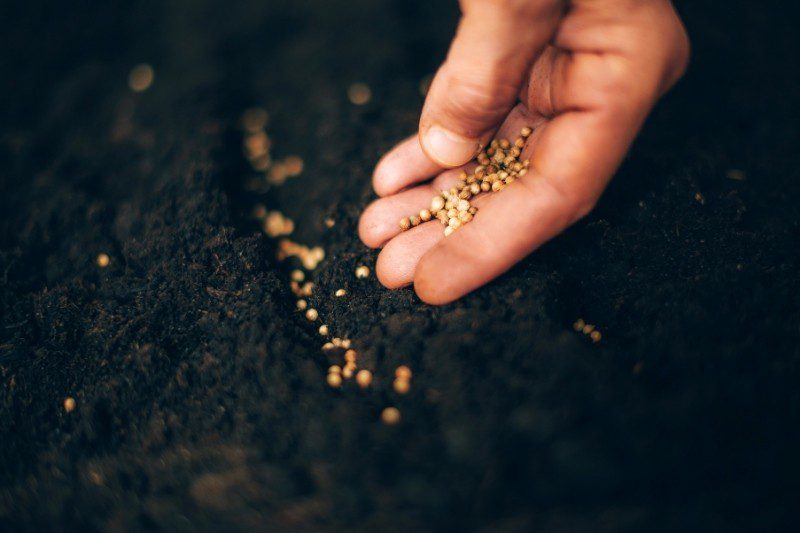
The soil is the foundation of your garden. You can amend the soil and improve it, but poor soil produces a poor garden.
Assess your soil today. Get it tested at your local cooperative office and adjust it appropriately. Enrich your soil with nutrients and organic matter as necessary. Once you have good soil, maintain it!
Add organic matter every year. This can include compost, mulch (leaves, grass, straw, etc.), and even wood chips.
After top-dressing your garden, rototill the mulch under. This helps to aerate and mix the new soil additions.
Fertilizers
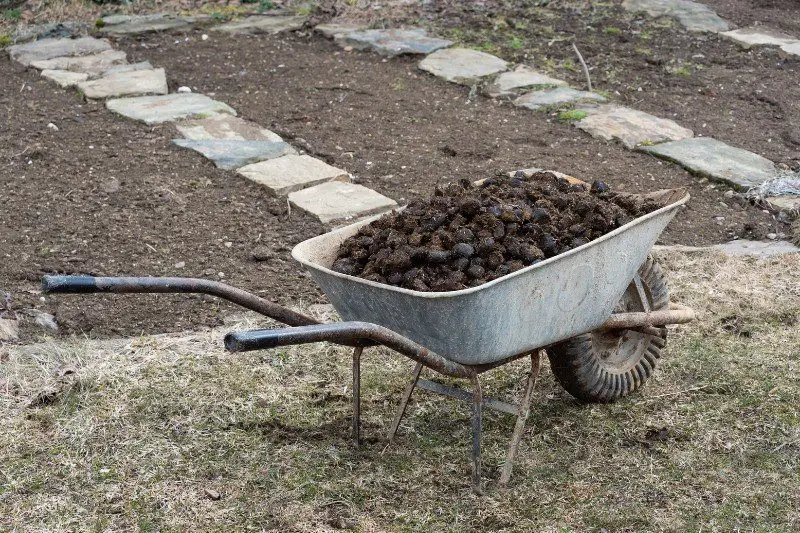
When growing your own food, every advantage counts. This includes fertilizer. Fertilizers provide plants with the food they need to produce.
Some plants, like peppers and tomatoes, are heavy feeders. They need fertilizer if they are to produce numerous and large fruits.
Commercial fertilizers can be used to great effect; however, for the long term, you need to find alternate sources of garden goodies.
Manure is one of the best natural fertilizers that you can add. Chicken, rabbit, horse, and cow manure can all be aged and used to boost your plants.
Second, you can find natural sources of fertilizer, especially nitrogen sources. One is compost tea. Soak your compost in water and use the water to fertilize your garden.
Next, you can use fish to augment your garden’s nutrition. A few fish chopped up and tilled in will feed even the most hungry plants!
Composting

One of the key factors in a successful garden is quality soil. It follows that the key to quality soil is compost!
Compost is gardening black gold! Use your yard clippings, leaves, and garden cuttings to build up a quality compost pile.
Layers of greens and carbon-rich materials (e.g., wood chips, brown leaves) eventually decay into the richest soil additive you can ask for.
Give your survival seeds the environment they deserve with these organic compost ingredients.
Start a compost pile the moment you clear land for your garden. Add to it throughout the year, and use the product of your labor to dress the garden in the spring!
Learn More About Survival Gardening
Food storage is a constant worry for all preppers. We can’t store a lifetime of freeze-dried meals, beans, and rice.
We need to have a plan for the future that allows us to be self-sufficient without a trip to the corner grocery store.
Your long-term plan needs to include gardening skills and supplies. Those supplies must include the ultimate self-sufficiency item. Seeds!
With the proper seeds, especially heirloom seeds, you can grow food from now until the next generation takes up the mantle. Look at how you can start with our article on survival gardens.
Take control of your food security and your food future with the best survival seeds to stockpile for SHTF.
